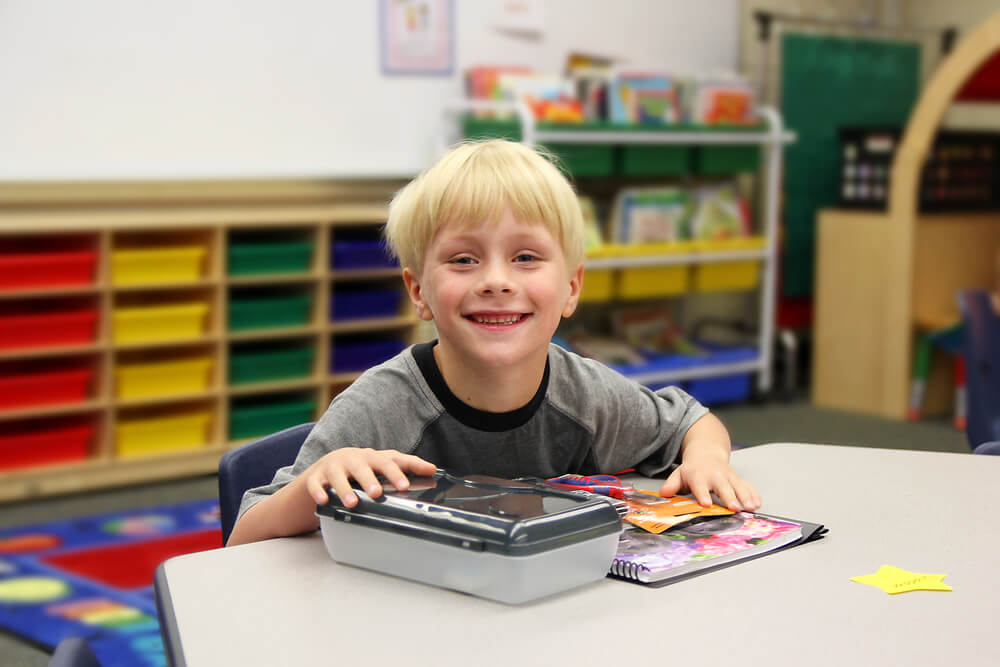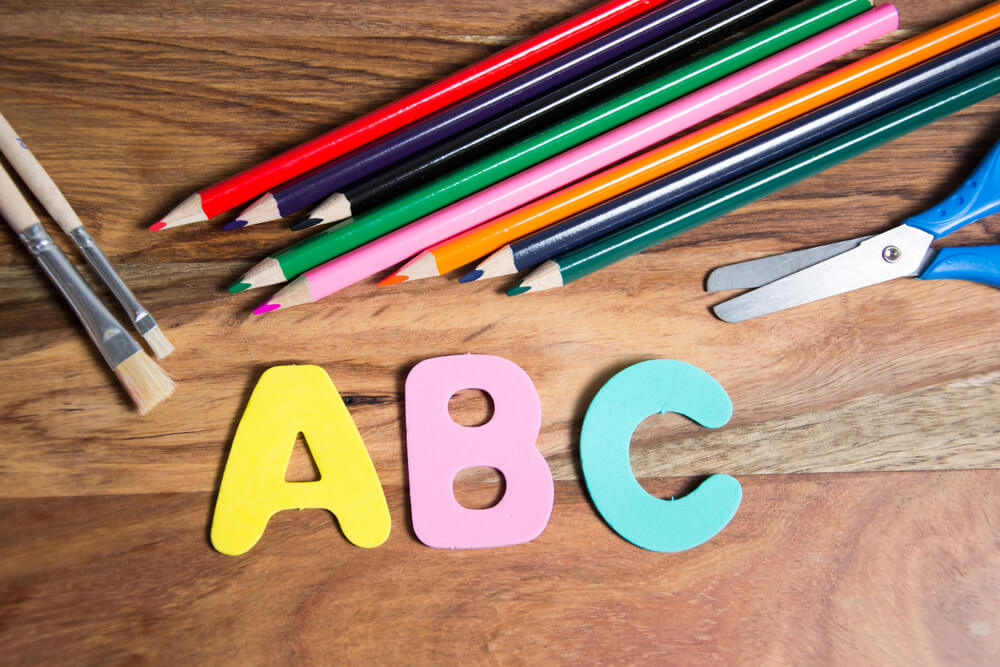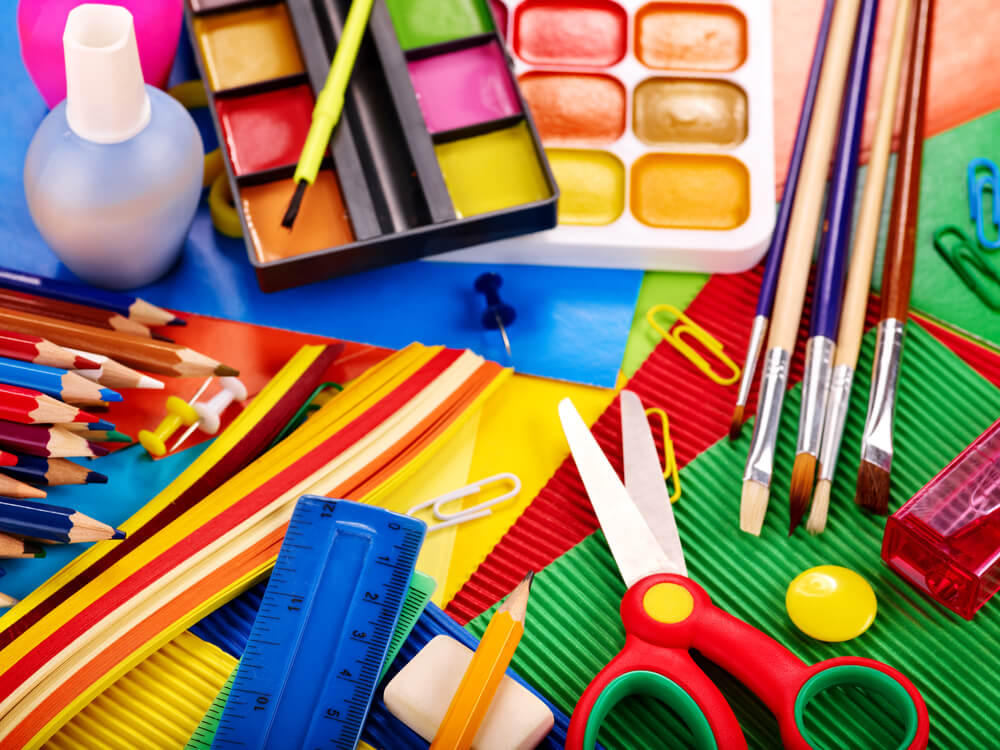Personal experience: how parents in the USA prepare a child for school and how much it costs
Back in June, we, the parents, received a folder of papers with recommendations from the school and material for working with the child at home in order to prepare a five-year-old child for school. The most difficult part was fastening the buttons; mastering this skill took several weeks of hard work. But it all starts, of course, not with buttons, but with the choice of school.

Фото: Depositphotos
Especially for VOA Yarina Matviychuk talks about her own experience in preparing a child for the first day at an American school.
Writing your first and last name, knowing the names of the months and seasons, fastening your own buttons - these and a number of other skills must be mastered by a 5-year-old child in the United States before going to school. From the age of five - from grade zero (kindergarten) - comprehensive school begins in the States.
What an American child should be able to do in 5 years: school expectations
- Alphabet: Recognizes the uppercase and lowercase letters of the alphabet
- Toilet: Independently visits the toilet
- Printed Word Concept: Knows how to read a book and keep track of words.
- Effort: Able to respond to difficult tasks
- Meals: Can unpack and pack your lunch
- Friendliness: Communicates with classmates in a positive manner
- Dressing: Can independently dress and take off clothes
- Letter: Can spell your name, capital letters
- Independence: Can independently cope with tasks
- Voice Level: Can control your voice
- Pronunciation: Can pronounce how the letters sound
- Kindness: Amiable to others, knows how to share
- Concentration: Can focus on assigning 5-10 minutes
- Name Recognition: Can recognize your written first and last name
- Optimism: Wants to go to school
- Mindfulness: Able to pay attention to the teacher or activities
- Listening: Able to listen quietly
- Rhyme: Recognizes rhyming words
- Scissors: Knows how to hold scissors and cut straight lines
- Lines: Can draw straight and curved lines
- Requests: Can follow directions on 1-2 actions
- Answers: Can answer questions
- Patience: Can patiently stand in line
- Calendar: Knows the names of the months and seasons.
- Desire to study: He likes to be at school and learn new things.
- Buttons: Can fasten buttons and zippers independently
School selection
Schooling in the US is compulsory and free. If parents do not like / do not fit public school, they can choose a private educational institution. Education in this, according to the National Center for Educational Statistics, will cost an average of 8-13 thousand dollars a year.
As a rule, families with children of school or preschool age, and even young spouses, when buying a house, reckon with which school the area of their potential new home or apartment is assigned to. A child can go to public school only at the place of residence.
On the subject: Best and worst school systems: state rankings
In addition, when choosing new housing or making a choice between public and private schools, families are often guided by school ratings. They are made up of both states and specialized public organizations, taking into account the following criteria:
- academic knowledge of school students (reading speed, knowledge of mathematics, worldview);
- school security (how well it is equipped, how many and in what condition gyms, lunch rooms, toilets, which mugs and sections children are offered);
- awards (recognition of schools or teachers at state, country level).
In the descriptions of the ratings, the percentage by race is indicated, and a geographical map of the area where children attend this school live is added.
If the rating is not enough for a final decision, you can always book an excursion to school.
During such a tour, parents communicate with teachers, with the principal, they can attend the lesson and see the school from the inside. Without an appointment you cannot come and independently consider the school. The tour can be ordered at any time by phone, even six months before the start of your child’s education.
An equally important criterion when choosing a school is the feedback and experience of parents whose children have already attended this school. Here the Internet, conversations with neighbors and friends will be very helpful.

Фото: Depositphotos
Acquaintance with the school
If you have decided where your child will study, the first acquaintance with the school will be a tour that you ordered or are still going to order. This is not necessary, but very useful for parents.
The administration of each school offers its own program of acquaintance with new students and their families. In our case, the headmaster periodically sends parents emails with school news. For the first time, we received an email from the school principal in May with an offer to meet and get to know each other.
During the summer, the school made four appointments for us. They are voluntary, not all families respond to these invitations, but such meetings are quite informative for both parents and teachers.
- First meeting - June
A meeting on the site only for parents with children of 5 years of age, so that future students and their parents meet and find a contact. The classes are predominantly 25-30 students.
- Second meeting - July
The school principal and teachers invited parents of all elementary school classes (from 1 to 5 class). The event is held on the street at the initiative of the parent committee. Children play on the playground, some of them my child already knows after the first meeting.
Near the playground there is a refrigerator trailer with ice cream, and popcorn is roasting next to it. These goodies - for children and adults - are financed from the budget of the parent committee.
The principal and teachers in an informal setting speak individually with parents and children. At the same meeting, the parent committee of the school talks about their work / plans, and also invites / writes new parents to the committee at will.
- Third meeting - August
This is a kind of school instruction for parents only (no children) in the evening. At this meeting, parents get acquainted with the school curriculum. Here they learn that in just two weeks their five-year-old must present their own “research” in class, that over the next year the child will begin to read, write a little, measure, and use a computer.
Teachers tell parents what a school day, lunch break, excursions, assessment of students’ knowledge and skills throughout the year, and communication with the teacher look like. And also - that a child cannot miss more than 14 days of school a year without an important reason.
On the subject: School in the USA through the eyes of Moscow parents
Here, parents are also offered to volunteer at school. For example, to help school staff during lunch, a half-hour break or after school, work in a library.
Those who agreed to volunteer should undergo mandatory training on the topic “Recognizing Signs of Oversight or Violence among Children”.
- Fourth and final meeting
This is a kind of “open day” for parents, relatives, students, teachers. With ice cream and a guided tour.
At this meeting, children are shown their classes, a gym, a canteen, and schoolchildren get acquainted with their teacher and classmates. This reminded me somewhat of the First Call in Ukraine, but without building in the school yard and official speeches.
The first call
In the USA there are no ceremonial lines on the first day of school. And the first day of the school year is not necessarily the first of September.
As a rule, each school district in the state decides when the school year begins. Quite a few American schools began their studies in August or even at the end of July. Traditionally, most schools started the school year on the second day after Labor Day (Labor Day), which is celebrated on the first Monday of September. For example, we go to school 4 September (Tuesday).
Schoolchildren do not bring flowers to teachers and do not dress festively. The first day of school is a normal school day.

Фото: Depositphotos
School shopping
According to the company Deloitte Services, school expenses for parents per child in the United States average 510 dollars. These are funds for clothes, shoes, stationery, equipment. Each school usually offers a list of recommended items for students.
My friend from New York Svetlana Sischuk, the mother of an 5-year-old boy, calculated that their school expenses coincide with the statistics.
In our case, the school on the site published the recommended list of accessories for students of different classes. For five-year periods, you need a little: a backpack, glue, felt-tip pens, markers, simple and colored pencils and headphones.
List from Svetlana Sischuk from New York
Stationery
- Crayola Colored Pencils - 3 Pack
- Crayola Markers - 2 Pack
- Crayola Watercolor Paints - 1 Pack
- Notebooks - 3 pieces
- Plastic folders - 8 pieces
- Simple pencils - 2 packs
- Scotch tape - 1 roll
- Index cards - 2 packs
- Glue stick - 6 pieces
- Liquid glue - 2 bottles
- Colored paper - 2 packs
- Rubber bands - 2 packs
- Copy paper - 2 packs
Other:
- Hand sanitizer – 1 bottle
- Wet wipes – 1 pack
- Antibacterial wipes - 4 containers
- Paper towels - 4 rolls
- Paper napkins - 4 packs
- Liquid hand soap – 4 bottles
Price: $ 111,00 for the whole kit.
We are not talking about corruption, because the parents themselves buy things from any store or online.
Each school independently determines the needs of its students. Some parents get a very detailed list of stationery with brand names.
This is usually done to ensure that all children in the class have the same pencils and notebooks, so that no one is considered “better or worse.” In addition, teachers usually know well which brand of scissors cuts well and is safe for the child. For example, headphones in our school should cost no more than $20, as the school recommends.
Stationery for the whole year ahead parents bring on the first day of school (or earlier). In our case, each student in the class has a signed box where his / her belongings are stored.
Most office supplies are not required, but are recommended to be brought. The school does not publicly announce who brought it and who didn’t.
Sometimes the parenting committee takes care of folding the knapsacks with all school supplies, which thus saves other parents time, and earns money for the needs of the school through various actions / events.
On the subject: Rules for children in the school bus and car
My colleague Tatyana Vorozhko (fifth-grade mother) says that in the summer they buy their son only a new backpack and shoes. The rest is ordered on the school website. It takes literally a few seconds, and all the necessary felt-tip pens, drawing albums and other accessories are on the student’s desk on the first day of the school year.
Primary school students in most public schools do not wear school uniforms. The main rule is that clothes and shoes are comfortable. In our case, the teachers had one request: that the children do not wear flip-flops to school, because it is inconvenient to run around in them.
Each student either brings lunch from home or buys in the cafeteria. On average, lunch costs $ 2,55, each time students pay for food with a card, which parents replenish once a month.
In general, if we compare preparation for school in Ukraine and the United States, American teachers (at least in elementary school) have much more intensive contact with parents - these are meetings, emails, excursions, volunteering, parent council. This makes parents feel more part of the educational process.
Participation in this for them is not necessary, but very useful. In addition, frequent meetings before the school year provide a less stressful start to education for both children and their parents.
Read also on ForumDaily:
What you need to know about education in the US
The White House tried to ban schools in the US from accepting illegal children
Seven questions that will face everyone who decided to move to the United States
Subscribe to ForumDaily on Google NewsDo you want more important and interesting news about life in the USA and immigration to America? — support us donate! Also subscribe to our page Facebook. Select the “Priority in display” option and read us first. Also, don't forget to subscribe to our РєР ° РЅР ° Р »РІ Telegram and Instagram- there is a lot of interesting things there. And join thousands of readers ForumDaily New York — there you will find a lot of interesting and positive information about life in the metropolis.











